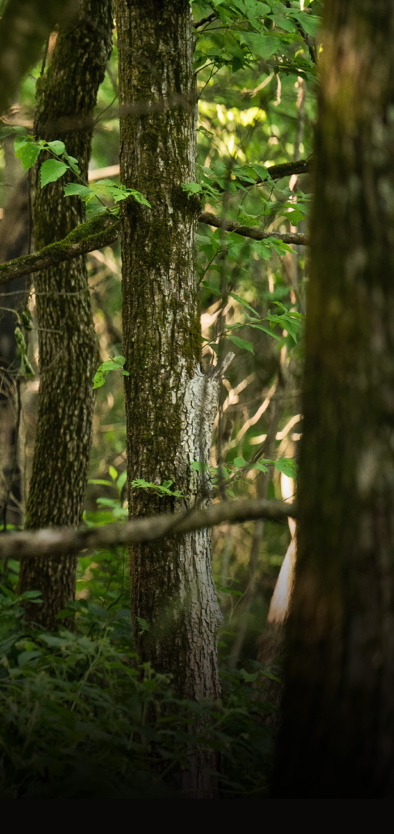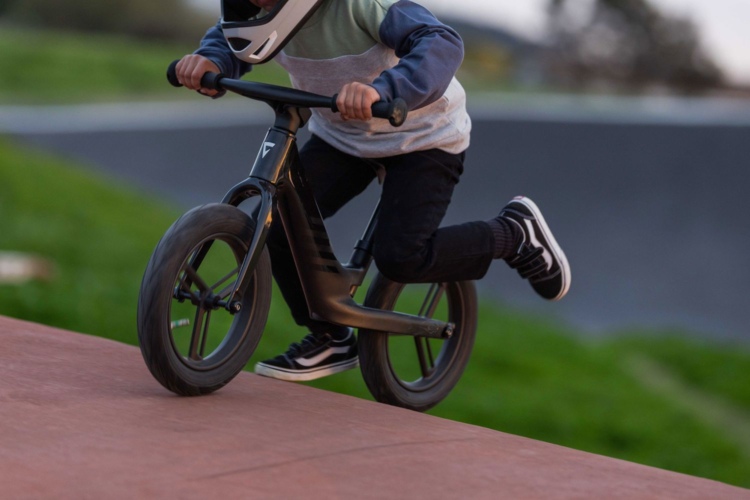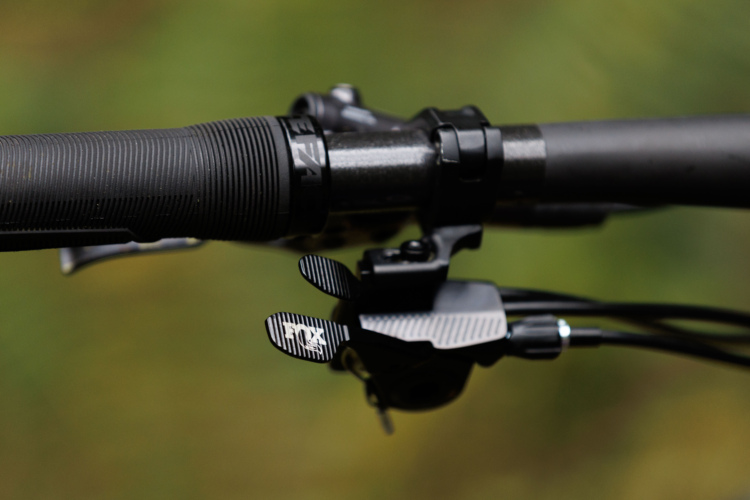

“Y’all gotta stop buying aliexpress knockoff parts.”
This r/MTB subreddit thread caught my attention earlier this year, though it wasn’t the initial post warning buyers away from knock-off parts that I found interesting. Instead, it was the lack of comments from riders saying they had been harmed by fake bike parts. (The OP uses the terms knock-off and fake interchangeably, though, as I’ll explain, these are two different things.)
Plenty of Redditors voiced their agreement with the original statement, but it seemed just as many were happy with their purchases. Perhaps most surprisingly, as far as I can tell, none of the 500+ commenters reported being hurt, at least physically, by a fake bike part, as the OP seemed to warn might happen.
So I decided to check with Singletracks readers and legitimate parts suppliers to understand the risks involved in buying counterfeit parts, knowingly or otherwise. What I learned is that buying counterfeit parts can and does harm riders and suppliers alike — if not physically, then at least economically. And while preventing counterfeit parts from being bought and sold online is difficult, it is getting easier.
What’s the difference between a knock-off and a counterfeit?
Mountain bikers tend to use the words counterfeit and knock-off similarly, but it’s important to note these are not the same. A counterfeit or “fake” part is one that’s marketed and sold as genuine, complete with the real brand’s packaging and logos. For example, a pair of fake Shimano brake pads might even ship with what appears to be the brand’s iconic silver and blue packaging. Or, an individual seller might write that a bike build comes with a carbon Race Face handlebar that is actually a no-name bar with Race Face decals attached.
A knock-off part is one that looks very similar to a genuine part, but features different branding or no branding at all. For example, the $59 Spurcycle Bell is beloved by riders, and today there are less expensive bells sold online that look virtually identical, but are sold under brand names including ROCKBROS and Pioneeryao, with prices as low as $14. Though they may look the same, these knock-off bells certainly don’t sound the same.
For the purposes of this article, I’ll be focusing on counterfeit bike parts. If you’re curious about the world of knock-off parts, let me know in the comments below, and if there’s enough interest, I’ll work on a follow-up article.
46% of Singletracks readers have purchased counterfeit bike parts
According to a recent survey, 46% — nearly half — of Singletracks readers reported purchasing counterfeit bike parts. Most bought the parts unintentionally, but 37% of those readers knowingly bought fakes.
At this point we’re talking about a subset of riders, but stick with me here. Among the buyers who bought fakes on purpose, roughly 80% said the parts worked out OK. This sorta jibes with the lack of dissatisfied commenters in that Reddit thread. Harmless, right?
Not always. When we asked Singletracks email newsletter subscribers to tell us about problems they had with fakes, about a dozen of you replied with specific examples. Riders mentioned everything from parts that didn’t fit to ones that wore out prematurely or plain just didn’t work.
Bentley Lee with KMC told Singletracks over email, “The main driver for people purchasing counterfeit products is a discounted price, but it’s not worth it from a performance and safety perspective.”
The harm to consumers
Multiple subscribers wrote about fake KMC and Shimano chains that didn’t mesh with gears correctly, and that were either already worn, or wore out much quicker than a legitimate chain. Another person mentioned fake Shimano XT brake pads that didn’t fit calipers properly, and that sounded like “metal on metal.” For most riders, braking is not an area where saving a few bucks is worth the risk.
“[C]ounterfeit goods not only cause quality problems (such as accidents and injuries) for the general customers, but also lead to detriments for our customers and business partners,” reads a statement on the Shimano website.
Travis T. from Paul Components pointed me to a statement on the company’s website addressing counterfeit products that reads, in part, “It goes without saying that buying suspiciously manufactured brakes for a bicycle could be extremely dangerous and even deadly. We’ve seen examples of these fakes in person and can tell you that they not only look, feel, and perform sub-par, there are aspects of their manufacturing that are straight up dangerous, and we would really hate for anybody to get not only ripped off, but seriously injured.”
Perhaps the closest anyone we heard from came to physical harm was one subscriber who bought counterfeit Shimano cleats on Ali Express, thinking they were legitimate. “Installed cleats, and could hardly get out of my pedals. The metal was so soft that the cleats would hang up in the pedal mechanism,” they wrote.
Whether anyone has actually been hurt physically or not, it’s clear that fake parts are generally inferior, which wastes buyers’ time and money.
“I ordered a pair of Paul MiniMotos from someone on eBay saying they were used. Get the parts and something wasn’t right,” a reader named Corey wrote. “People intentionally supporting these knock-offs has effects on the rest of us when someone sells them to the next person as the real thing, either knowing that they are selling a bad bag of goods or not. Didn’t run them. I’m not taking chances with brakes.”
The harm to brands and small businesses
KMC and Shimano are two brands that are frequently counterfeited, though smaller brands like Minnesota-based Paul Components are clearly affected too. Not only does the company miss out on the initial sale, their customer service reps spend unnecessary time and resources working with customers who are having trouble with a component, only to find out that’s because it’s not a genuine item.
I asked Lee from KMC how many sales he thought the company missed out on due to counterfeits, and he said, “We honestly don’t know. Fortunately, over the last few years, we’ve been able to reduce the number of counterfeit sellers while bolstering our web and Amazon stores, so we are in a better position. We are constantly monitoring this now.”
How to avoid buying counterfeit parts
Over the course of researching this story, I learned that counterfeit bike parts are more likely to be encountered on platforms that do not verify product branding for items sold on their sites. This includes but is not limited to AliExpress, eBay, Facebook Marketplace, and many online buy/sell platforms like the one offered by Pinkbike. Most of these marketplaces do allow buyers to flag sellers for selling fake parts, though it’s unclear how effective this is at preventing counterfeit sales.
I heard from several readers who say they are cautious about buying parts online, and that they can usually tell if a part is fake. Lee says the biggest red flag is the very thing that attracts buyers in the first place. “The biggest red flag for a counterfeit product is a very low price. If the price seems too good to be true, then it most likely is.”
Many brands are taking measures to reduce counterfeiting by adding unique product and packaging design details. Ironically, the brands are reluctant to highlight these measures to customers for fear that the counterfeiters will simply adjust their own designs to match.
“The best way to guarantee that a product is legit is to buy from the brand’s website or a verified branded site like Amazon,” Lee said. “KMC only sells on sites that provide verified branding and doesn’t sell on sites like eBay or Aliexpress. We want our customers to know that purchasing from kmcchain.us is worry-free.”





















24 Comments
Feb 21, 2025
Feb 22, 2025
You'll always get what you pay for if you buy from a physical store, as you can better check what you buy beforehand for counterfit/fake or not, though I understand that this is not always possible (for me at least). I'll stick with trusted sites and sellers.
Feb 22, 2025
Feb 22, 2025
Feb 23, 2025
In most if not all cases this is done with permission, but maybe you're talking about something else?
Feb 23, 2025
3 weeks ago
Feb 21, 2025
Feb 23, 2025
Feb 22, 2025
Crucial bike parts such as frames, handlebars and stems are not good to buy fake.
Clothing, glasses and purely cosmetic parts are okay ish in terms of functionality to buy fake or counterfit. A bell that breaks isn't gonna make me crash. You won't get the best quality, but it won't be catastrophic.
Do your research thoroughly and you'll likely just be fine! Ther can be found good stuff on Aliexpress, you just gotta look for it. Trace velo often buys chinese cheap bike parts, good source to learn from.
The more crucial a part is, the more you have to know for sure that it works well!
Feb 23, 2025
Feb 22, 2025
Feb 23, 2025
Feb 21, 2025
Also I would add that those that are happy and willing to purchase counterfeit product should also consider the environmental factor. If you don't know the factory that produced the product, you have no idea where they're dumping waste materials etc., and are almost certainly partaking in practices that are harmful to the environment (how do you think they're able to produce the items so cheaply?). Whereas we can at least scrutinize those factories we do know and hold them to certain standards.
Feb 23, 2025
Feb 22, 2025
Feb 21, 2025
Feb 22, 2025
Feb 21, 2025
However, if we're talking about knock-offs (ie, products that look very similar to brand-name products, but are sold under a different brand), then yeah, Amazon still has a lot of those.
Feb 25, 2025
Not got any fakes tho, anything branded off AliExpress 99% going to be fake.
Feb 23, 2025
Feb 22, 2025
Anything else I always use reputable online stores, biketart, merlin, balfes, certini, etc.
3 weeks ago
Feb 24, 2025